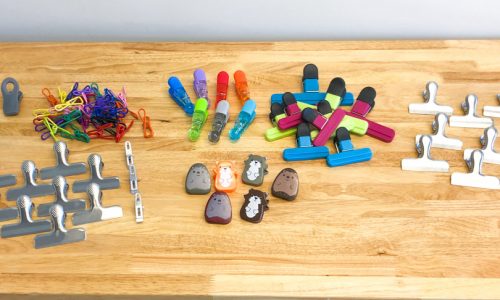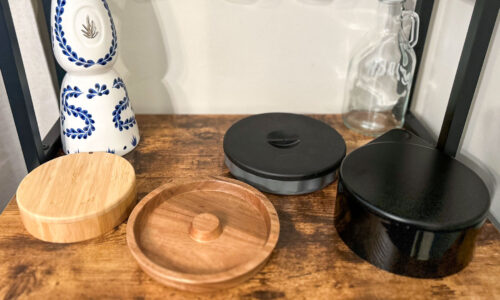Keep Your Cutlery Sharp As Ever With The Best Whetstone

Our Review Process
Don't Waste Your Money is focused on helping you make the best purchasing decision. Our team of experts spends hundreds of hours analyzing, testing, and researching products so you don't have to. Learn more.
Our Picks For The Top Whetstones
- 1. LANBAOSHI 2-In-1 Non-Slip Base Whetstone
- 2. KEENBEST Professional Universal Whetstone
- 3. Sharp Pebble Extra Fine Handcrafted Whetstone
- 4. Sharp Pebble Restorative Polishing Whetstone
- 5. CWINDY Double-Sided Polishing Whetstone
- 6. Sharp Pebble Handcrafted Premium Whetstone
- 7. Angerstone Coarse Multipurpose Whetstone
- 8. KING KW65 Ultra Fine Plastic Base Whetstone
This whetstone set is handmade using white corundum, which requires just 5 minutes of soaking before each use. One side of the stone has a fine grit for polishing blades, while the other features a coarse grit for sharpening your knives. Included with the whetstone is a sturdy base an angle guide and a fixer stone.
Corrosion-ResistantUse this whetstone to sharpen any blade, including kitchen knives, outdoor axes and even garden shovels.
Thanks to the rubber non-slip base on this whetstone, you'll have better control when sharpening your knives. The stone is dual-sided and made using a high-quality silicon carbide. Use the top medium grit to consolidate the edges of your blades and the bottom coarse grit to reshape the edges.
Economical PickWhen shopping on a budget, opt for this affordably priced whetstone.
If you've never used a whetstone before, this option is easy to hold and versatile with both coarse and fine grit sides. You'll use water with this stone, and you'll also get a detailed guide that teaches the basics.
Great for BeginnersThis two-sided whetstone can handle very dull knives and has a bamboo base that beginners will find easy to hold.
If you need a whetstone that gets your knife as sharp as possible, this one offers two levels of coarseness and works with water to allow for quicker sharpening. You also get a flattening stone.
Best for SharpnessDesigned to handle the dullest knives, this whetstone helps you get a smoother edge and doesn't compromise on quality.
Buying Guide
Rather than throwing out your dull knives and spending money on new ones, you can use a whetstone to get a sharper edge and extend your knives’ lifetimes. Simply carefully rub your cutting tool against the side of the whetstone, and you’ll soon have a sharper edge that’s safer for kitchen use. This handy item can also help you refresh kitchen scissors and even gardening tools.
When shopping for whetstones, you’ll find that there are both natural and synthetic options for the actual stone material. These make a difference in how easy and quick it is to sharpen your tools as well as the mess you’ll need to clean up.
The surfaces of natural whetstones usually need to be primed with water or oil before use. They generally offer a slower sharpening experience compared to synthetic whetstones. On the other hand, synthetic whetstones — such as those made of ceramic or diamonds — are very hard and durable, and they don’t need any real preparation for good and quick results.
Also, know that whetstones that you see for sale will specify a particular grit number or coarseness category. You’ll need to consider how much you need to sharpen your tool and how clean of a finish you’d like to determine which is the best choice. Some whetstones have two sides for more versatility.
For example, coarse whetstones — often with grit numbers up to 1,000 — work best when you need to significantly sharpen your knife, but they leave a less than clean finish due to their abrasiveness. On the other end of the spectrum, you have fine whetstones that leave a very clean edge, which is great for newer knives, and they have grit ranges between 4,000 and 8,000. Medium whetstones are a good compromise for the kitchen and usually have grit numbers of 1,000 to 4,000.
Along with considering the coarseness and material of the whetstone, be aware these stones come in various sizes and qualities. If you plan to sharpen long knives, don’t opt for a short whetstone since this can make it easy to cut yourself. And if you’re shopping for a premium whetstone made of a material like diamonds, research the brand carefully, as durability will differ.
What to Look For
- When using a whetstone, don’t expect to just rub your knife against it a few times and get a sharp edge. Be patient; you’ll need to continue the process several times to get a satisfying result. For example, you might find you spend five minutes on a significantly dull knife.
- You’ll likely find that a single whetstone doesn’t satisfy all your sharpening needs, as different levels of grit suit different purposes. For example, you might use a coarse whetstone for an old, dull knife but follow up with a fine whetstone to make the edge more defined. If you do want more of a one-size-fits-all option, though, you could go for a medium whetstone since it will work fine for most kitchen knives that aren’t super dull.
- For some knives, you might want to consider a quicker, easier option than a whetstone. You can find electric knife sharpeners where you’ll simply insert the knife and allow for a few passes for a good result. However, such gadgets will take up more space in your kitchen.
- If you feel confused about whetstone sizes, know that a 6-inch whetstone should work fine for most kitchen knives. You can always measure the length of the blade if you feel unsure or opt for a few different sizes to fit your needs.
More to Explore
Here are some interesting facts to check out about sharpening stones and tools:
- As far back as 2.6 million years ago, ancient hominids actually used sharpened stones as tools.
- According to a study from the University of Colorado in Boulder, prehistoric people developed a way of sharpening their tools and stone knives 75,000 years ago.
- While you can find whetstones from around the world, Japan is especially known for their version of the sharpening stone. Usually called water stones, these tools are used in combination with water to create a slurry of loose particles that makes the sharpening process quicker and easier.


















